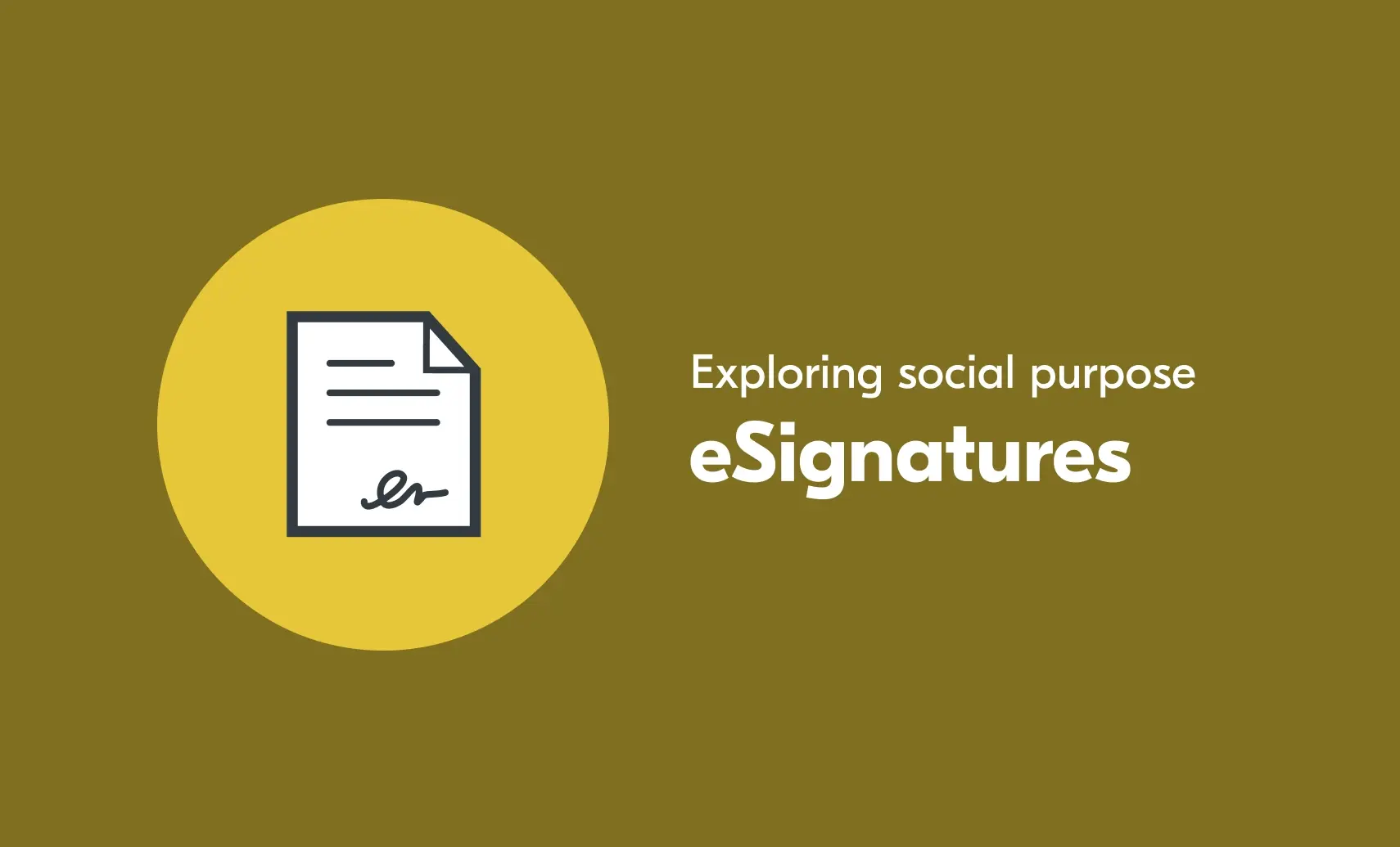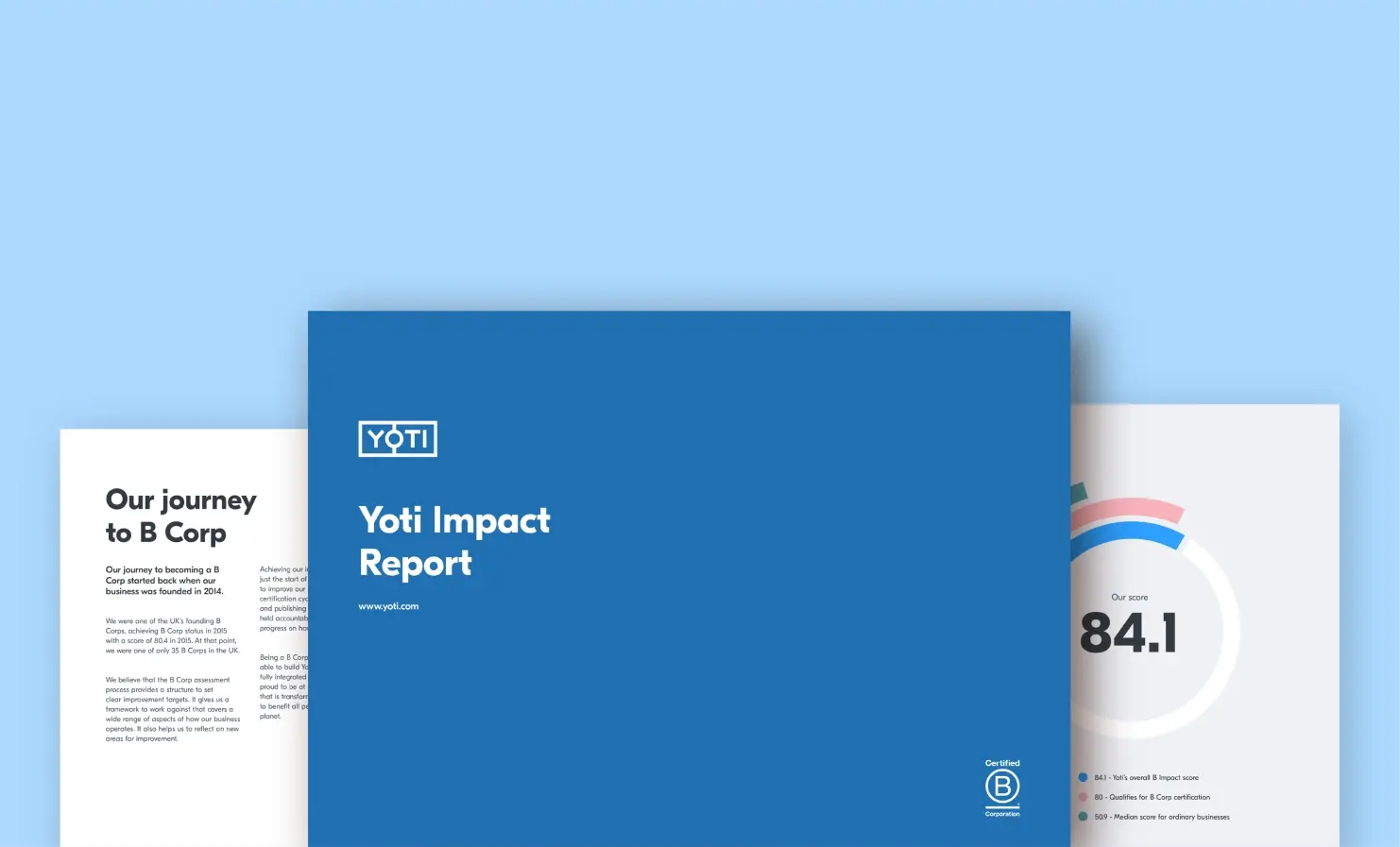
Our purpose is at the core of everything we do. Our principles are integrated throughout our business, whether that’s how we go about our day-to-day operations, interact with one another or design and build our solutions.
This series looks beyond just how our products can benefit businesses. It also explores how they are helpful to the people using them. This article focuses on eSignatures.
Tackling fraud
People are becoming more aware and better informed of the different types of scams out there. So fraudsters have had to respond with new and increasingly complex techniques. In turn, people and businesses need to constantly adapt, so that they don’t fall victim to bad actors.
Last year saw the highest number of fraud cases reported to the UK’s National Fraud Database. Of these, almost 70% were cases of identity fraud. Put simply, identity fraud involves using a person’s stolen details to commit a crime. Many victims of identity fraud never find out how, where or when their details were compromised. Nevertheless, the aftermath can be costly and stressful.
Therefore, we need to do everything we can to protect ourselves from this threat. We can achieve this by being more careful with our personal information. This includes being more cautious about how we handle and share sensitive documents.
When we need to sign something, such as a contract or a form, we usually receive a physical or email copy of the document. We sign this form, printing it out if necessary, and then send it back to the organisation. Often, we return the document via post.
Most of these documents contain personal information, such as your full name, home address and contact details. They might also contain other information that could be used to identify you, like employment details or customer numbers.
When we post these documents, our personal information is vulnerable. Letters can be lost in transit or even intercepted by bad actors. One way we can counter this is to move this process online.
A secure eSignature system will allow organisations to send documents directly to the signer. The recipient can electronically sign the document and return it straight to the sender. This means that the only people who can access the document via this secure platform are the sender and the receiver. This significantly reduces the risk of tampering or forgery by third parties as it’s much more difficult for them to access the document.
Increasing security
A robust eSignature solution should have authentication checks integrated into the process. This is particularly important for sensitive transactions, such as legal agreements, employment contracts and content consent forms.
Technically, anyone with access to the link can open and sign an electronic document. Given the billions of malicious emails that are sent each year, identity verification provides an extra layer of security. Users should always be offered a range of identity verification methods for greater inclusivity and accessibility.
This can be through one-time document verification, a reusable Digital ID or a “Selfie with Sign” feature. Yoti’s eSignatures with Selfie requires signers to take a selfie at the time of signing. The platform performs a liveness check to ensure the signer is a real person and not a presentation attack impersonating the signer. eSignatures with Selfie provides a verifiable link between the document, the signer and the agreement being signed.
Improving efficiency and accessibility
The process of waiting for a document to arrive, signing it and then returning it via post can take around a week, if not more. In comparison, completing this process digitally can take a matter of seconds. Documents can be signed and returned with a few clicks. In fact, 70% of documents sent electronically are signed within the first day.
Electronic signing cuts out the time-consuming process of printing and scanning documents. It also bypasses the need to go to a postbox or a Post Office to securely send the document. And it completely eliminates the waiting time for the document to be physically delivered to its destination.
In some cases, this time frame can be further extended when there are geographical barriers present. With an electronic process, people located all over the world can send, sign and receive documents without being subject to these delays. eSignatures can improve access to services, agreements and opportunities without the challenges associated with signing physical documents.
eSignatures can also provide an alternative for those with limited mobility. People have the option to sign and return documents electronically without having to leave their homes. This is also beneficial for those who live in areas where they’re unable to easily access a Post Office.
Electronic signing also allows for easy tracking of the signing process. An eSignature platform allows you to check the status of documents, see when they’ve been signed, identify the signatories, and keep a detailed record of the transaction. eSignatures lead to faster turnaround times, reduced costs, and improved overall efficiency.
Reducing environmental impact
Moving this process digitally has countless environmental benefits too. Physical documents have a significant environmental impact since the paper industry is a primary contributor to deforestation. Not only does electronic signing lead to a reduction in paper use, but there’s a reduction in waste. Paper-based documents generate a significant amount of waste through discarded documents, envelopes and shipping materials.
Physical documents also require a significant amount of storage space. Not only do the documents themselves need to be stored but so do paper, ink and folders. If these documents contain sensitive information, this storage will also need to be secure. These spaces need to be suitable as paper documents are vulnerable to fire, water damage or mould. Without these measures, there’s the risk of crucial information being permanently lost.
Signing and sending documents electronically also requires less energy compared to its paper-based alternative. By removing the need for physical document transportation, eSignatures reduce the carbon emissions generated by shipping and delivery services.
Adapting to a changing world
Transitioning to an electronic solution helps users to meet the challenges of today’s digital world. Advanced security features such as identity verification checks can play a significant role in combating identity fraud. This, combined with increased efficiency, accessibility, and environmental benefits, offers a secure and streamlined document signing process.
If you’d like to know more about eSignatures, please get in touch.



